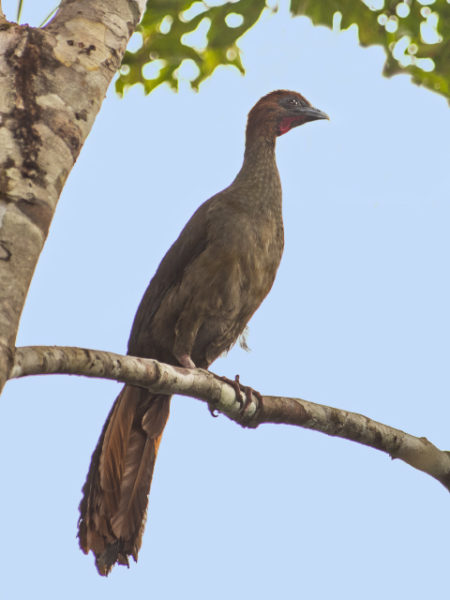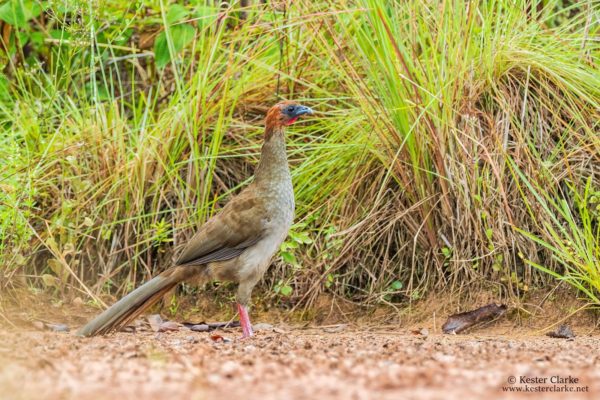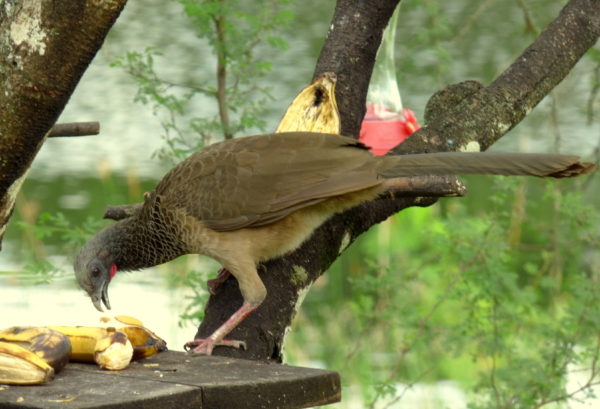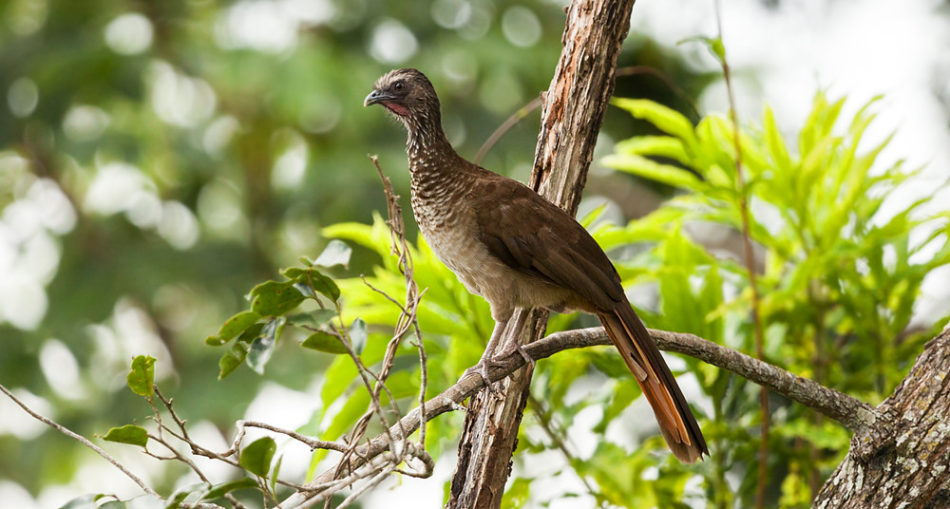Chachalacas are slender arboreal guan resembling a wild turkey; native to Central America and Mexico; highly regarded as game birds. These birds are quite fascinating to look at and if you are a bird lover then I suggest you continue reading.

Chachalaca on the branch of a tree. Photo Source: https://en.wikipedia.org/wiki/Little_chachalaca
Scientific Classification
Kingdom – Animalia
Phylum – Chordata
Class – Aves
Order – Galliformes
Family – Cracidae
Genus – Ortalis
Species – O. Motmot
Description
The small Chachalaca measures 43–54 cm (1.4–1.8 ft) in length and weighs 345–620 g. (0.76 to 1.4 lb). Its underparts are gray, its upperparts range in color from reddish brown to gray-brown, and its head is reddish chestnut. The outside tail feathers are rusty, while the middle ones are gray-brown. Dark brown make up its primary flight feathers.

Little Chachalaca. Photo by Kester Clarke/www.kesterclarke.net
Habitat
The Chachalaca can be found in countries such as Brazil, French Guiana, Venezuela, and Guyana. They live around the undergrowth along riversides, in clearings, and in abandoned pastures.
Communication
Chachalacas use various “cha cha lac” and “klok atok atok” sounds to communicate. Both in the morning and the evening, they begin their chants. Through the air vibrations caused by the “cha cha lac” sound, the other chachalacas are able to comprehend these sounds. In the morning and evening, they also make additional sounds like drumming, rattling, and whirring to communicate various feelings and concepts to the other chachalacas. Even young children use several call types to communicate their needs and requirements to their parents.
Watch this clip of a chachalaca’s sound – https://www.youtube.com/watch?v=SwA54eeocgM
Diet

Chachalaca eating bananas. Photo Source: https://commons.wikimedia.org/wiki/File:Ortalis_columbiana_%28Guacharaca_variable%29_%2814677870524%29.jpg
Fruits, seeds, leaves, buds, berries, and flowers are all consumed by chachalacas. Additionally, it eats tiny insects. It also eats from the ground, in addition to eating from trees.
Reproduction
Chachalacas travel to their nesting locations, which include Texas’s dense forests, during the breeding season, which lasts from early March until early September. The chachalacas use the existing nests that other birds have left behind and modify them to make them their own. Typically, chachalacas lay four to five white eggs. The eggs hatch in about 22–25 days and the young remain with their parents at least until the month of October. The bare throat patch on both the male and female chachalacas turns dark crimson during the breeding season, signaling that the birds are prepared to mate.
Chachalaca Fun Facts:
- Chachalacas have a small greyish head and a long grey neck, with a bare throat patch on their necks. This patch turns deep red during the breeding season.
- They are very friendly birds and are not afraid to be around human beings.

German Herpetologist Johann Georg Wagler. Photo Source: https://www.wikiwand.com/en/Johann_Georg_Wagler
- The chachalaca was first discovered in the year 1830 by the German herpetologist Johann Georg Wagler (1800-1832)
- The predators of the plain chachalaca include the Texas indigo snake and other mammals like raccoons. Also, large owls hunt the plain chachalaca.
- In Mopan Maya folklore the call of the Black Chachalaca (Penelopina nigra) is said to indicate it will rain soon.
References:
- https://kidadl.com/facts/animals/chachalaca-facts
- https://en.wikipedia.org/wiki/Little_chachalaca
- https://www.planetofbirds.com/bird-stories-the-plain-and-black-chchalaca#:~:text=In%20Mopan%20Maya%20folklore%20the,evidently%20used%20for%20sacrificial%20purposes
- https://www.vocabulary.com/dictionary/chachalaca
Discover more from Things Guyana
Subscribe to get the latest posts sent to your email.







